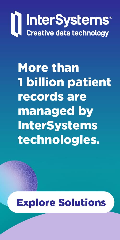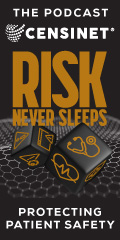The primary point of using the Cloud is using operating expenses vs limited capital ones and avoiding having to update…
Monday Morning Update 9/3/07
From Timber Roller: “Re: AJAX. See this Solitaire application, which looks like a Windows program, but which has been implemented using only JavaScript, cascading style sheets, and DHTML … so-called AJAX. That’s why AJAX rocks: not because it’s solitaire, but because thick client-like applications can be implemented without having to load and configure software on the desktop. This site uses widgets from Yahoo’s UI library for the drag-and-drop stuff.” Link. A good time-waster if your employer removes Windows games by default. It works really well – impressive.
From Chuck Lumley: “Re: open source EHR initiative. openEHR is a fascinating (and apparently already internationally successful) open source EHR initiative started by an historical EHR thought leader — Dr. Clem MacDonald at the Regenstrief Institute in Indianapolis.” Link. The website makes it hard for non-geek, non-academics to know what the heck they’re talking about, but it looks like some sort of standard rather than an actual product. My only takeaway was that Ethidium Health Systems is using the specs in its Evolution EMR product. Actually, this presentation (warning: PDF) is a better intro, although still way deep in the programmer stuff.
From Rogue: “Re: Epic’s new learning center. It is clearly shaped like a treble clef sign (as in sheet music). Hitting a high note? High-pitched screams? Anyway, I do like the dollar sign analogy the best. What, no helipad?”
From The Shelton Shadow: “Re: private attributes. TSS has been investigating the use of private attributes in DICOM Conformance Statements. Private attributes can cause problems when trying to view the image files stored in archives. Everyone making new purchases should compare the private attributes section to other DICOM Conformance Statements. Siemens and Philips look to be in good shape since their current products have no private attributes. GE is another story – their products have 20-30. Non-GE viewers will miss the private attribute data stored in an archive. The only way to see them is to store them in the DICOM Header, which will create an archive with mixed image files. GE sales reps might promote their product as better, but you are increasing the likelihood of a forklift upgrade if you decide to move to a native DICOM format supplier.”
From Edward Koogle: “Re: Misys. The former Misys office in Johnstown, originally a Sid Goldblatt Sunquest office, closed today. Remaining employees will work from home until new owners QuadraMed and Vista decide what to do. It’s sad considering over 100 people worked there at one time.”
From SG: “Re: BPO outsourcing. On the same lines as MedAssist acquisition, Indian healthcare outsourcing company Apollo Health Street acquired a leading US-based medical billing outsourcing company – Zavata.” Link. Interesting quote: “Technopak’s Singh noted that Indian hospitals and those in the US were at different phases in their investment strategy. The Indian players seek health-care consultancy for business strategy, facility design, planning and, only then, turn to health-care information technology. Most US hospitals, meanwhile, are now spending on redesigning information technology systems.”
From Darla Mackadoo: “Re: Rabbit Healthcare Systems. Consultant recommends an oncology software EMR package to a couple of clients, including Lone Star Oncology (good size group). Oncology EMR goes belly up shortly after. Consultant makes a smart move and gathers folks together to create a new EMR for resale. Lone Star Oncology becomes a big stakeholder in Rabbit. Consultant/new President goes back to all those folks that had the old belly up product and sells them the new stuff. That’s what I heard, anyway.”
No consensus yet on “healthcare” vs. “health care”. Dictionaries differ. It’s probably not a good word to describe most hospitals and doctors anyway since few are worried about “health” as they are “episodic treatment of abnormalities”. That’s another argument.
Sean McDonald, the Pittsburgh entrepreneur who started hospital robotic drug packaging vendor Automated Healthcare and sold it to McKesson for $65 million, will take his new company public. Precision Therapeutics sells a test that helps choose the most effective cancer chemotherapy. UPMC people are involved, which got UPMC in trouble previously: one of its lab directors was medical director at Precision Therapeutics and was named in a lawsuit that claimed he sent them specimens unnecessarily for his own benefit. He quit the company, although I don’t know how the lawsuit turned out.
Nova Scotia’s health department is seeking bids for a RHIO-type project.
Jobs:
CIO, Phelps County Regional Medical Center (MO)
Executive Director, Wisconsin Health Information Exchange (WI)
CIO, Olean General Hospital (NY)
Technical Project Manager (DC)
Cerner Analyst (NC)
Implementation Consultants (MN)
VP of Clinical Transformation, BayCare (FL)
CIO, Delnor-Community Health System (IL)
CIO, Sacred Heart Health System (FL)
Meditech PCS, ED (National)
Centricity Healthcare Consultant (MA)
It was the perfect feel-good hospital story: San Diego Chargers running back LaDainian Tomlinson would serve as the celebrity spokesperson for publicly owned Palomar Pomerado Health. Everybody figured it was a nice charity gesture until a reporter probed, the hospital balked at giving details (apparently not quite getting the “publicly owned” part of their governance), and a public records request revealed that the $60 million athlete is being paid $2 million over five years for his celebrity services. When nonprofits start throwing big money at their “brand”, they’ve forgotten the mission (unless it was self-aggrandizement).
HIMSS will offer another Virtual Conference on November 6-7. The first was met with underwhelming response based on pre-conference estimates, but 2,200 people is still pretty good (will they come again?) It’s kind of like Second Life for HIT, I suppose. For vendors, HIMSS is offering the usual cornucopia of opportunities to send them money, including a $5,000 deal to put your logo on each e-mail confirmation (I’m positive that will kick-start record sales). HIStalk sponsorship is quite a deal in comparison. Somewhere in all that commercial feeding frenzy is some education, although of a modest nature. And timeshare-like bribes … err, door prizes. One session is blocked out for the “can’t avoid it if HIMSS is involved” RHIO topics, although with a slightly more cautionary tone than the rah-rah of years past (a curt nod to the expanding RHIO graveyard). Seems like an overly heavy reliance on vendor speakers for a not-free program if you ask me (two of the ten sessions have a McKesson presenter alone). Pass.
Brev+IT is coming with the Top 5 HIT stories this week. Sign up here.




















































































Chuck – OpenEHR is more of a specification and interoperability standard than a full usable product out of the box. All of the users really appear to be informaticians, not mainstream vendors with front-line physicians and nurses as clients.
Hi Chuck,
openEHR is indeed a specification for semantic interoperability. It is not an application for use out of the box, but designed to work behind the scenes with existing clinical applications, enabling knowledge level exchange of clinical information rather than just document level sharing.
The openEHR architecture is open source and the IP owned/managed by the openEHR Foundation – a collaboration between University College London and Australian company, Ocean Informatics. Lead architects are longtime clinician Dr Sam Heard (whose presentation you linked to) and software engineer Thomas Beale – see http://www.oceaninformatics.biz
[Dr Clem McDonald is NOT a founder of the openEHR Foundation]
As an example, recent work in the UK’s NHS Connecting for Health project enabled detailed clinical modelling for Maternity and Emergency domains using openEHR archetypes – which are reusable clinical concept specifications. These archetypes were then aggregated to build up clinical templates eg for an Antenatal checkup or Labour assessment. The scope and details about the work is publicly available on http://www.ehr.chime.ucl.ac.uk/display/nhsmodels/Home.
The resulting archetypes can be found on http://svn.openehr.org/knowledge/TAGS/dev-uk-nhs/Lorenzo_3.5/pub/ContentRelease-1.0.1/archetypes/gen/html/index_en.html
The resulting templates on http://svn.openehr.org/knowledge/TAGS/dev-uk-nhs/Lorenzo_3.5/pub/ContentRelease-1.0.1/templates/gen/html/index.html
Please let me know if you would like any more information
Kind regards
Dr Heather Leslie
Director of Clinical Modeling
Ocean Informatics
Australia
HIMSS’ virtual conference is not much different than the virtual conferences I have seen put together in other industry sectors. These conferences are really just a lead-gen activity for vendors who are ultimately the sponsors of such events. As part of sponsorship vendors get speaking/presentation slots, are encourage to bring customer stories, occasionally you’ll haave an industry analyst or two thrown into the mix, etc.
Having been on the vendor side of such activities, the ROI from a marketing/lead-gen perspective is rarely justifiable. But hey, that was in another industry sector, maybe HIT is more amendable to such virtual conferences, though 2,200 from that last event is nothing to write home about.